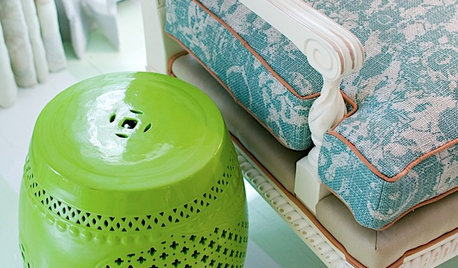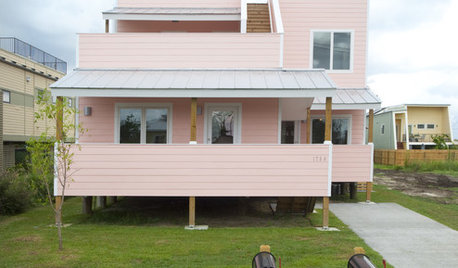Need Drainage Help!
jockewing
10 years ago
Related Stories

BATHROOM DESIGNConvert Your Tub Space Into a Shower — Waterproofing and Drainage
Step 4 in swapping your tub for a sleek new shower: Pick your waterproofing materials and drain, and don't forget to test
Full Story
PETS6 Ways to Help Your Dog and Landscape Play Nicely Together
Keep your prized plantings intact and your dog happy too, with this wisdom from an expert gardener and dog guardian
Full Story
LIFE12 House-Hunting Tips to Help You Make the Right Choice
Stay organized and focused on your quest for a new home, to make the search easier and avoid surprises later
Full Story
BATHROOM DESIGNKey Measurements to Help You Design a Powder Room
Clearances, codes and coordination are critical in small spaces such as a powder room. Here’s what you should know
Full Story
DECORATING GUIDESThe Most Helpful Furniture Piece You May Ever Own
Use it as a table, a seat, a display space, a footrest ... and indoors or out. Meet the ever-versatile Chinese garden stool
Full Story
CONTEMPORARY HOMESFrank Gehry Helps 'Make It Right' in New Orleans
Hurricane Katrina survivors get a colorful, environmentally friendly duplex, courtesy of a starchitect and a star
Full Story
GARDENING GUIDES8 Unthirsty Plants Help You Save Water in Style
Spend less effort and money on your landscape with drought-tolerant and native plants that liven up your yard
Full Story
GARDENING GUIDESGardening Solutions for Heavy Clay Soils
What’s a gardener to do with soil that’s easily compacted and has poor drainage? Find out here
Full Story
FARM YOUR YARDAdvice on Canyon Farming From L.A.'s Vegetable Whisperer
See how a screened garden house and raised beds help an edible garden in a Los Angeles canyon thrive
Full Story
GARDENING GUIDESGreat Design Plant: Silphium Perfoliatum Pleases Wildlife
Cup plant provides structure, cover, food and water to help attract and sustain wildlife in the eastern North American garden
Full StoryMore Discussions







Yardvaark
jockewingOriginal Author
Related Professionals
Hyattsville Landscape Architects & Landscape Designers · Marco Island Landscape Architects & Landscape Designers · Otsego Landscape Architects & Landscape Designers · Arlington Landscape Contractors · Berwyn Landscape Contractors · Fort Wayne Landscape Contractors · Pahrump Landscape Contractors · River Ridge Landscape Contractors · Rockwall Landscape Contractors · Cincinnati Decks, Patios & Outdoor Enclosures · Greendale Decks, Patios & Outdoor Enclosures · Kernersville Decks, Patios & Outdoor Enclosures · Reading Decks, Patios & Outdoor Enclosures · Redlands Decks, Patios & Outdoor Enclosures · West Chester Decks, Patios & Outdoor EnclosuresYardvaark
jockewingOriginal Author
Yardvaark
jockewingOriginal Author
Yardvaark